Noritz continues to lead with innovation with the recent unveiling of the newly upgraded EZ Series of Residential Condensing Tankless Water Heaters. These powerful, simple-to-install units provide significant energy and cost-savings to home and small-business owners and feature industry-first technology designed with the owner in mind. Originally introduced in 2017, the EZ Series is a Read more
Industry Blogs
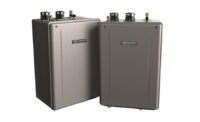
Noritz continues to lead with innovation with the recent unveiling of the newly upgraded EZ Series of Residential Condensing Tankless Water Heaters. These powerful, simple-to-install units provide significant energy and cost-savings to home and small-business owners and feature industry-first technology designed with the owner in mind.
Originally introduced in 2017, the EZ Series is a proven performer, and its many installation advantages are familiar to the American market. But its recent upgrades and updates warrant a closer inspection by even the most experienced professional water heater installers and their customers. Here are nine key features you don’t want to miss!
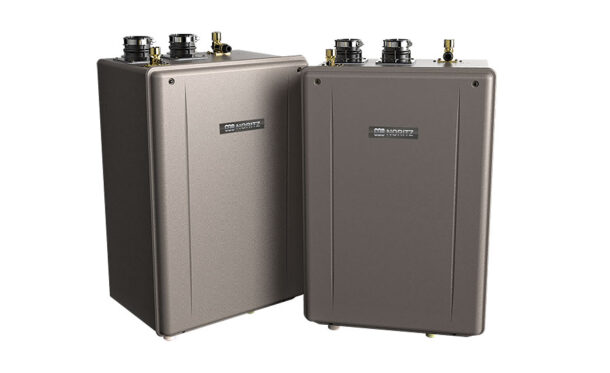
- Easy-peasy installation
The switch from tank to tankless can be daunting, but the EZ Series simplifies the process. The top-mount, hot and cold-water connections eliminate complex, new-plumbing work.
The existing flex vent from the pre-existing tank heater can be repurposed as a chase for the new venting, while the tank unit’s half-inch gas line can also be reused with the new EZ Series models. Taken together, all these benefits add up to time and cost savings for both the installer and the home or business owner.
- Seamless adaptation to warmer climates
Any concerns over how a tankless water heater can handle minimal demands for heat — specifically, in warm summer months — can be eliminated with the EZ Series’ new, industry-first Steady BTU (SBTU) Mode.
The burner-control technology in the EZ Series, which offers highly precise control of the combustion process, reduces the effective minimum input by more than two-thirds when incoming water temperatures approach 90ºF. The result? — a minimum input of under 5,000 BTU per hour.
- Energy efficiency leader
The Uniform Energy Factor for the upgraded EZ Residential Tankless Series has been boosted from 0.95 to 0.96, an industry-leading rating that results in substantial energy savings and lower monthly fuel bills.
How? With the EZ Series, teamwork makes the dream work with a unique blending of two types of high-grade, stainless-steel heat exchangers that complement each other:
- The primary heat exchanger contains a higher tensile-strength stainless material that resists heat shock and cracking.
- The secondary exchanger, which produces acidic condensate when it extracts latent heat from combustion, is also made of a stainless-steel material that resists corrosion and scale buildup.
- Streamlined common venting
One of the upgraded EZ Series enhancements is a fully-integrated non-return valve (NRV) that eliminates the need to install the NRV externally between the heater and the common-vent header.
What’s the impact? First and foremost, the NRV is built into the unit, ensuring that the backflow of harmful exhaust from one unit into another non-operating unit will be safely prevented. In addition, installation and cost are significantly reduced.
- Extended vent lengths
The EZ Series units can be directly vented, using PVC, CPVC, or rigid polypropylene materials. With a 2-inch pipe, the vent length has been extended from 60 feet to 65 feet. With a 3-inch pipe, the vent length has risen from 100-feet to 150-feet.
- Durability backed by an industry-leading warranty
Both of the redesigned stainless-steel heat exchangers carry an industry-best, 25-year warranty, assuring peace of mind for the home or business owner.
- All-in-one bundles
For a worry-free installation, both of the upgraded EZ Series models (EZTR50 and EZTR75) are available in “EZTR Bundles” that include everything an installer needs for direct, indoor replacement of 50- and 75-gallon tank-type water heaters.
- Flexible placement
The EZ Series models can be installed indoors or outdoors. The choice is yours.
- Plethora of accessories
Additional accessories include a remote controller and cord, anchoring screws, and wall-mounting brackets. This bracket makes for easy installation and flexibility in placement as the unit can slide from left to right, which enables the installer to make adjustments post-installation. In addition, it provides space-saving benefits by freeing up valuable floor space.
For more information about the new EZ Series from Noritz, visit: http://www.ezseries.noritz.com.
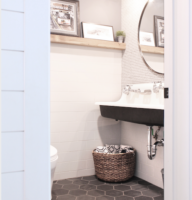
Choosing the right tubular for your project is essential as a professional plumber. Not only does it need to be functional, but it also needs to be cost-effective, durable, and aesthetically pleasing to your clients. This article will guide you through decision-making, weighing the pros and cons of brass and plastic materials, thickness options, and Read more
Choosing the right tubular for your project is essential as a professional plumber. Not only does it need to be functional, but it also needs to be cost-effective, durable, and aesthetically pleasing to your clients.
This article will guide you through decision-making, weighing the pros and cons of brass and plastic materials, thickness options, and specific applications.
Material Options: When selecting tubular products, you typically choose between brass and plastic materials. Brass tubular products (typically chrome-plated) are more durable and elegant, often used in higher-end or commercial projects. On the other hand, plastic tubular products (or polypropylene materials) are more affordable, easier to cut, and offer corrosion resistance. If you are working on a plumbing project with a tight budget, plastic tubular products may be the better option. Additionally, they are ideal for under-sink applications where aesthetics are less crucial.
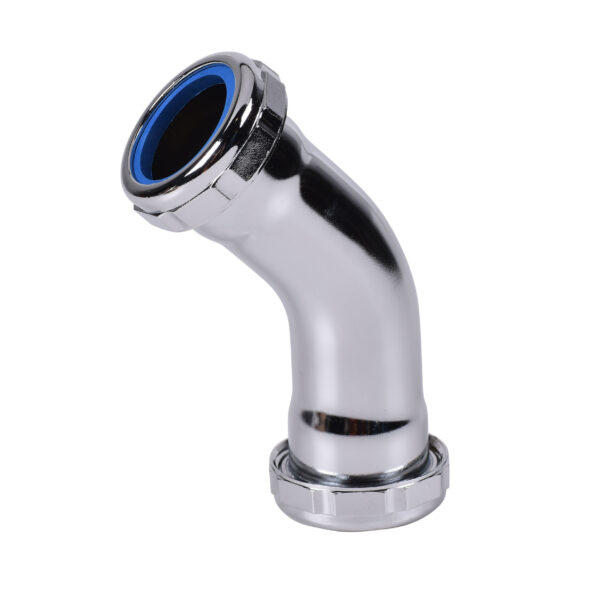 Factoring in the application is also crucial. For instance, there are certain scenarios where brass is unsuitable, such as in science labs or some dentist’s offices. The waste materials in these settings can be highly corrosive to metal, which could cause significant damage over time. In such cases, a plastic trap can be advantageous because plastic does not corrode and is generally unaffected by most chemicals.
Factoring in the application is also crucial. For instance, there are certain scenarios where brass is unsuitable, such as in science labs or some dentist’s offices. The waste materials in these settings can be highly corrosive to metal, which could cause significant damage over time. In such cases, a plastic trap can be advantageous because plastic does not corrode and is generally unaffected by most chemicals.
Unlike PVC/ABS pipes, plastic tubular products (or polypropylene materials) cannot be assembled with solvent cements but require slip nuts and washers.
Thickness Options: If you choose brass tubular products, you will need to consider the thickness options available. Brass tubular products come in three thicknesses: 17 gauge (commercial grade), 20 gauge (mid-range thickness), and 22 gauge (budget grade). The thicker the product, the more expensive it will be; however, it will also be more durable. If you are working on a commercial-grade project requiring more durability, you may consider using 17- gauge brass products. But for smaller residential projects, 20 or 22-gauge brass products will suffice.
On the other hand, all Oatey plastic tubular products are schedule 10 in thickness.
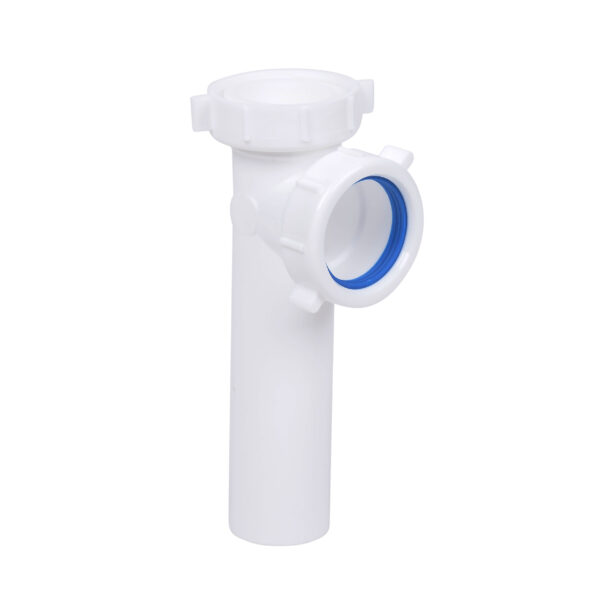
Size: The most common tubular product sizes are 1-1/4″ and 1-1/2″. These are available in brass and plastic products. The trap adapter connection to the branch drain in the wall will determine the largest tubular product that can be connected with a slip nut and washer. This point of connection can also be reduced for 1-1/4″ tubular assemblies with a reducing washer and slip nut. Bathroom sink installations usually are completed with 1-1/4″ products, but 1-1/2″ products will work. Kitchen sink installations can only be completed with 1-1/2″ products.
Specific Applications: To choose the right tubular for your project, you need to know the specific applications available. Oatey offers a wide range of tubular products for various applications, including P-Traps, S-Traps, Wall Bends, Extension Tubes, and more. Additionally, they provide covers for ADA sink installations, including center/end outlet waste covers and P-trap covers. You must choose the right application for your project, ensuring it fits correctly with other plumbing components.
When selecting the best tubular products, consider the application. Oatey offers a variety of tubular products, including P-Traps, S-Traps, Wall Bends, Extension Tubes, and more, all designed for specific applications.
Here are examples of tubular applications and the appropriate tubular product for each.
- P-Traps: Ideal for under-sink installations, P-Traps are designed to prevent sewer gases from escaping into your home. They are most commonly used in bathroom and kitchen sinks.
- S-Traps: S-Traps are similar to P-Traps but are no longer approved for installations and are primarily in older homes and buildings.
- Wall Tubes: These are pieces of pipe with a curve that fits under the sink and connects the P-Trap to the house’s sanitary system. Wall Tubes are connected to the J-Bend to form the P-Trap and direct wastewater from the sink drain to the waste line without leaks.
- Extension Tubes: These extend the waste pipe to the wall or floor. Extension Tubes come in various lengths and can be cut to size, offering flexibility for accommodating different installation needs.
- Double Slip Joint Offsets: Double Slip Joint Offsets are essential for creating a seamless connection between two pipes at different heights or angles. They come in handy when you need to navigate around obstacles during a plumbing installation.
- Branch Tailpieces: Branch Tailpieces are used to connect a dishwasher discharge hose to the sanitary system, making them ideal for dual-basin or single-bowl kitchen sinks that do not have a garbage disposal.
- End Outlet Continuous Waste: Ideal for dual-basin kitchen sinks.
- Center Outlet Continuous Waste: Used when the drain is centered under a dual-basin sink.
- Direct Connect Waste: Offers a direct connection to the sink basket strainer.
- J-Bends: Helps to form the P-Trap under the sink, connecting to wall tube.
- Captured Nuts and Washers: Made of durable polypropylene, these are used to secure your plumbing fixtures.
Accessories and Other Best Practices: Oatey offers a variety of tubular accessories, including slip joint nuts and washers, flanges, air gaps, and multiple garbage disposal accessories. It is always best to use these accessories with your tubular products to ensure secure connections and prevent leaks.
Further, Oatey recommends using thread tapes or pipe joint compounds on the fine threads of the pop-up tailpiece to prevent leakage. Additionally, considering corrosion resistance and insulating tubular pipes can increase efficiency and durability.
Considering corrosion resistance and insulating tubular pipes is essential for efficiency. Galvanized and stainless steel piping are not commonly used for tubular products, so only use them if your project demands it. Thread tapes and pipe joint compounds may also be used on the fine threads of a pop-up tailpiece to prevent leakage.
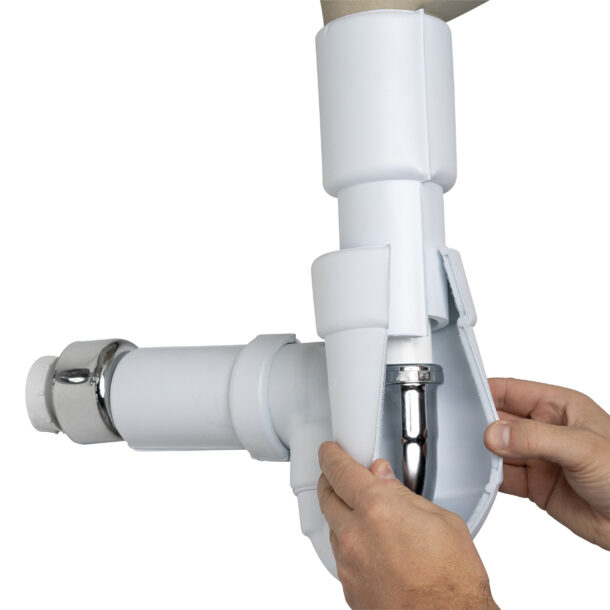
Oatey offers covers for ADA sink installations, including center/end outlet waste covers and P-trap covers.
Please note that the specific type of tubular product you will need depends on the requirements of your plumbing project. Be sure to understand these requirements before making a purchase. Always consult local building regulations and professionals as required.
In conclusion, selecting the right tubular for your project as a professional plumber is crucial. Weighing the material options, thickness options, specific applications, and best practices can help you make the right decision for your project.
 About the Author
About the Author
Sean Comerford is Technical Applications Manager at Oatey Co. He is third-generation tradesman with nearly 20 years of plumbing experience, including serving as the lead plumber for commercial & residential new construction, service and fire protection jobs. He holds a State of Ohio Fire Protection License for Sprinkler and Standpipe.
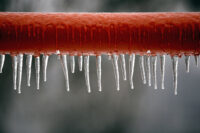
Winterization is crucial for protecting plumbing systems from freezing temperatures and preventing costly pipe bursts and leaks. As a plumbing trade professional, it is essential to understand the steps involved in winterizing both interior and exterior plumbing. This article provides expert winterization tips to share with your customers to ensure their plumbing system remains intact Read more
Winterization is crucial for protecting plumbing systems from freezing temperatures and preventing costly pipe bursts and leaks. As a plumbing trade professional, it is essential to understand the steps involved in winterizing both interior and exterior plumbing.
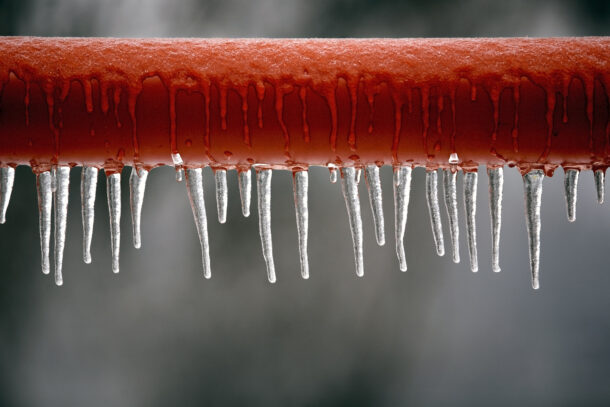
This article provides expert winterization tips to share with your customers to ensure their plumbing system remains intact during winter months.
Steps to Winterize Interior Plumbing
- Shut off the main water valve: Locate the main water valve, usually found in the basement, crawl space, or mechanical room. Shutting off the main water supply and opening all faucets will help drain the system effectively. For multilevel homes, start draining from the lowest level, while for single-level homes, begin from the tap closest to the main shutoff valve.
- Adjust water heater settings: Set the water heater to the lowest temperature or “vacation mode” to prevent the tank from freezing. This step eliminates the need to relight the pilot upon the homeowner’s return.
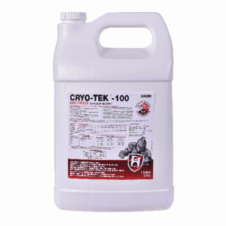 Flush toilets and add antifreeze: After turning off the water and draining the system, flush all toilets to remove excess water from the tanks. Additionally, recommend pouring an environmentally safe antifreeze into the toilet bowl and tank to lubricate the flapper/seals and prevent dry rotting. Hercules® Cryo-Tek™ 1 gal -100 Antifreeze is a ready to use 55% Virgin Propylene Glycol formula designed for hydronic heating and cooling closed loop systems and general plumbing systems that require freeze protection. Any Hercules Cryo-Tek product can be added to protect pipes from freezing and bursting. It also prevents freeze-ups in chiller systems, recreational vehicles, seasonal homes, mobile homes, trailers, boats, and industrial use.
Flush toilets and add antifreeze: After turning off the water and draining the system, flush all toilets to remove excess water from the tanks. Additionally, recommend pouring an environmentally safe antifreeze into the toilet bowl and tank to lubricate the flapper/seals and prevent dry rotting. Hercules® Cryo-Tek™ 1 gal -100 Antifreeze is a ready to use 55% Virgin Propylene Glycol formula designed for hydronic heating and cooling closed loop systems and general plumbing systems that require freeze protection. Any Hercules Cryo-Tek product can be added to protect pipes from freezing and bursting. It also prevents freeze-ups in chiller systems, recreational vehicles, seasonal homes, mobile homes, trailers, boats, and industrial use.- Prepare drains with antifreeze: Pour antifreeze into shower, tub, floor, and sink drains to prevent freezing and maintain trap seals. This step ensures that water in the traps does not freeze or evaporate.
- Maintain heat and air circulation: Keep the thermostat set to at least 55°F to prevent pipe freeze damage. Additionally, encourage clients to have their heating system inspected and serviced for optimal performance. Recommend keeping cabinet doors beneath bathroom and kitchen sinks open to allow warm air to reach the pipes.
- Insulate exposed piping: Protect pipes in uninsulated areas and along exterior walls by covering them with insulating sleeves or wrap. This safeguards the plumbing system against frigid temperatures.
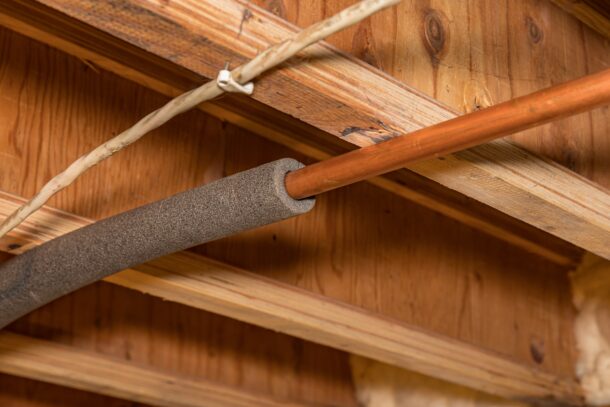
- Seal off the garage: Advise homeowners to keep their garage doors shut to prevent cold drafts from reaching the plumbing on adjacent walls. Suggest adding a vinyl or rubber strip to the bottom of the garage door for better insulation against cold air and potential mold prevention.
Steps to Winterize Exterior Plumbing
- Turn off external water supply valves: Locate the isolation valves on the water lines leading to the external water supply (usually in the basement, crawl space, or mechanical room) and shut them off. Open all taps until water is completely drained from the outside hose bibbs.
- Disconnect garden hoses: Recommend clients remove garden hoses and fittings from the hose bibbs to prevent freezing. Water expands when it freezes and can cause pipe damage. To prevent valve damage, we suggest using an air compressor to blow out any residual water in the exterior lines.
- Clear gutters and downspouts: Advise homeowners to clean out their gutters and downspouts to ensure proper water flow and prevent ice build-up, which can lead to costly repairs.
- Seal cracks and gaps: Check for any visible cracks or gaps in siding, door frames, or windows. Use a sealant to fill both exterior and interior cracks, effectively blocking drafts that can lead to frozen pipes and increased utility bills.
Preventing frozen pipes during the winter requires thorough winterization both inside and outside the property. Following the steps outlined in this guide will help protect your clients’ plumbing systems and save them from potential headaches and expensive repairs.

About the Author
Sean Comerford is Technical Applications Manager at Oatey Co. He is third-generation tradesman with nearly 20 years of plumbing experience, including serving as the lead plumber for commercial/residential new construction, service and fire protection jobs. He holds a State of Ohio Fire Protection License for Sprinkler and Standpipe.

We’re going to talk about a painful topic,” Callbacks”. I bet I just made the hair stand up on the back of your neck. After being a contractor for 23-plus years and speaking to contractors daily, one of the most proverbial pain points in owning a contracting business is callbacks. Callbacks can be highly frustrating Read more
We’re going to talk about a painful topic,” Callbacks”. I bet I just made the hair stand up on the back of your neck. After being a contractor for 23-plus years and speaking to contractors daily, one of the most proverbial pain points in owning a contracting business is callbacks. Callbacks can be highly frustrating, a waste of valuable time, increase technician turnover, very expensive for the company, and in some cases, the loss of a customer. Throughout this article, will talk about dissecting the cause, and I will give you four steps you can implement to reduce them.
If we break callbacks into four categories; human error, manufacturer defects, lack of training, and inadequate operations it will be much easier to identify a rationale to track them. We are all human and prone to make some mistakes and even the best manufacturers have some defective products that find their way to the wholesaler’s shelf. Training is one of the best areas to maximize your efforts as it improves technician confidence which customers will immediately notice when speaking to them. A company-wide training culture also creates validation that a tech fully understands the product “before” being asked to service or install products. Operations afford owners and managers to be transparent with their techs when an event occurs and how to prevent them from moving forward. Using technology can help mitigate callbacks by bringing consistent operations to the top of mind, customer communication, and customer specifics, when techs are in the field.

Human Error
Unless the mistake is repetitive, or constantly not following company operations, human error is a hard one to have a resolution for. Good coaching, knowing and interacting with your techs, and being transparent with technicians are some of the best procedures to help with human error. Look at the data and see if there is a pattern. Perhaps something is happening with that senior tech outside of work that is causing the errors at work. Tracking the errors by the technician and job type is a best practice to reduce them.
Manufacture Defects
Contractors attempting to get paid for a manufacturer defect is challenging. We all know most times if a product fails under the warranty period, it will replace the part but not pay for any of the labor. Even on a DOA (dead on arrival) issue, this policy stays true however, there are exceptions. The key takeaway for handling defective products is to track them. Tracking them gives you the availability to see trends and make adjustments to the product or manufacture. It’s also worth noting to differentiate between the product and the tech doing the work. Specifically, make sure it is the product and not an install or service procedure the tech is not doing correctly. Once you track how many manufacturing defects you see in the course of the year, then calculate and it should become a line item in your pricing structure as a cost of doing business. Yes, this is a normal expense item that is a cost to run a business. Large corporations operate this way as they know there will be mistakes and contracting is no different.
Operations
Constantly monitoring and adjusting your operations can play a role in reducing callbacks. There are numerous CRM’s that help automate tracking the data to make adjustments. Data like trends in a job type, what products were used, which tech did the work, and the amount of time the tech was on the call. Automation also helps to mitigate confusion between the customer, dispatcher, and the original call. Defining and adjusting operations that affect callback mitigation is key to reducing them company-wide. Be completely transparent with company procedures between the technicians and their manager as to what happens when there is a callback.
Training
Teachable and trainable moments on an individual and company-wide basis can be produced through callbacks. Decide if there is one tech or several techs on a given call type having callbacks. If it’s several techs on the same callback, bring them together and reinforce the training on the hows and whys and just as importantly track the outputs of the training efforts. Make the adjustments from the group to individualized training accordingly if the callbacks persist with one technician. If the callback is from an individual and it’s identified as a training issue, assign or implement the training and as an interim, use your CRM to prevent that tech from doing the call type until it is confirmed the tech thoroughly understands the original mistakes made. Providing, implementing, and tracking training for your tech is one guaranteed way to mitigate technical and operational mistakes that lead to callbacks. In the fast-paced business environment, numerous contractors don’t value training or implementation of activity at the level it should be. There are other, less expensive options available to contractors to use a training tool instead of traditional brick-and-mortar training models. Digital and virtual reality software is available at one-third the price per technician. This training can be done asynchronously and not affect workflows and scheduling. All of the metrics are available to track the progress of a technician’s performance against the training activity assigned to a technician and help with callback mitigation.
There you have it! Implement and or refine these four tactics in your business and you will start to reduce some of your callbacks. It should be noted that one of the impacts of a callback not mentioned in this writing is the financial impact and opportunity costs of a callback on the company’s bottom line. Look for a breakdown and explanation of that in future articles. Happy Contracting!
 Guest Blogger: Ken Midgett, has been in the plumbing and heating industry for over four decades. He has worked in every facet of the plumbing and heating industry. He has owned two successful PHCC businesses, is a licensed Master Plumber, a two-time national award-winning educator for plumbing and heating CTE classrooms, with a 100 percent placement into the industry for all eligible seniors from his program. Ken was noted throughout the CTE industry for the inclusion of non-traditional workers in his classroom, including young women. He has placed several of those young women in the workforce. Ken is passionate about the skilled trades and he continues to stay active in PHCCNA and PHCCPA. Ken is the current president of his local PHCCLV association. This role has allowed him to continue mentoring and coaching young apprentices in the field. He is currently employed at Interplay Learning as the Plumbing Market Director. You can follow Ken at www.linkedin.com/in/kenmidgett.
Guest Blogger: Ken Midgett, has been in the plumbing and heating industry for over four decades. He has worked in every facet of the plumbing and heating industry. He has owned two successful PHCC businesses, is a licensed Master Plumber, a two-time national award-winning educator for plumbing and heating CTE classrooms, with a 100 percent placement into the industry for all eligible seniors from his program. Ken was noted throughout the CTE industry for the inclusion of non-traditional workers in his classroom, including young women. He has placed several of those young women in the workforce. Ken is passionate about the skilled trades and he continues to stay active in PHCCNA and PHCCPA. Ken is the current president of his local PHCCLV association. This role has allowed him to continue mentoring and coaching young apprentices in the field. He is currently employed at Interplay Learning as the Plumbing Market Director. You can follow Ken at www.linkedin.com/in/kenmidgett.
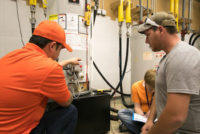
In the realm of home maintenance and repair, few professionals are as indispensable as plumbers. These skilled individuals are the unsung heroes who keep our homes running smoothly by maintaining, repairing, and installing vital plumbing systems. A great plumber possesses a unique blend of technical expertise, problem-solving skills, and customer service. In this blog post Read more
In the realm of home maintenance and repair, few professionals are as indispensable as plumbers. These skilled individuals are the unsung heroes who keep our homes running smoothly by maintaining, repairing, and installing vital plumbing systems. A great plumber possesses a unique blend of technical expertise, problem-solving skills, and customer service. In this blog post, you’ll explore five qualities that set exceptional plumbers apart, ensuring that your plumbing needs are met efficiently and effectively.
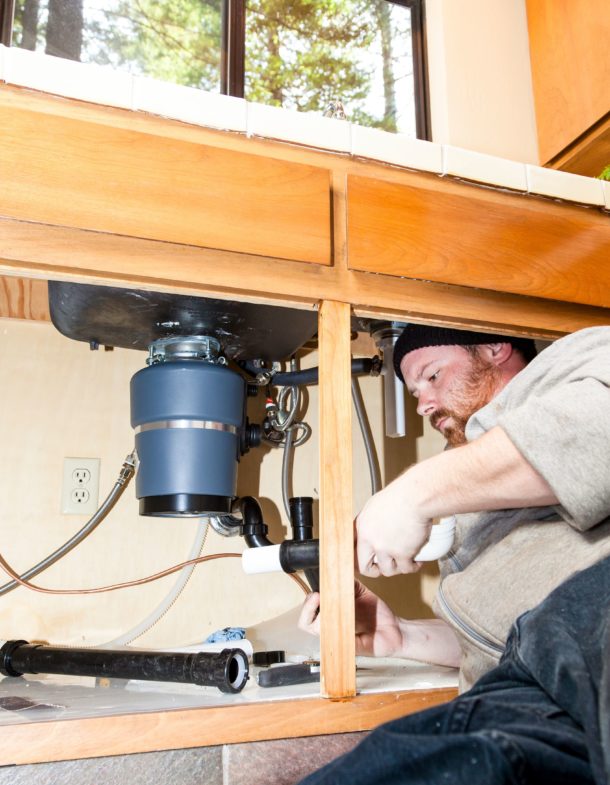
1. Technical Proficiency
Central to the skill repertoire of an exceptional plumber is a profound technical prowess. Plumbers necessitate an adept comprehension of plumbing systems, pipe compositions, the art of fixture installations, and the nuances of fluid dynamics. Whether rectifying a dripping faucet, dislodging a clogged drain, or rectifying a ruptured pipe, a proficient plumber adeptly navigates the fundamental mechanisms and wields the necessary tools for prompt resolution.
If you live in or around Long Beach, for example, finding credible plumbers at Long Beach will be your top priority. Plumbers in general should exhibit familiarity with regional plumbing codes and regulations, thereby ensuring both effectiveness and adherence to local standards. The integration of such technical proficiency guarantees not only the resolution of immediate issues but also the fortification of your home’s plumbing foundation for the long term.
2. Problem-Solving Aptitude
Plumbing challenges frequently manifest as intricate puzzles demanding swift and astute resolutions. A proficient plumber demonstrates a knack for precise problem diagnosis, methodically evaluating potential remedies, and executing the optimal strategy. Be it an enigmatic watermark on the ceiling or an abrupt water pressure dip, a skilled plumber adeptly evaluates the scenario and proffers viable solutions.
This adeptness at troubleshooting guarantees expedient resolution, mitigating both disruptions and potential structural harm to your residence. By swiftly deciphering issues and employing suitable measures, these experts ensure your peace of mind and the safeguarding of your home’s integrity.
3. Adaptability and Continuous Learning
The plumbing landscape remains in a perpetual state of evolution, marked by the frequent emergence of novel technologies and methodologies. A distinguished plumber comprehends the significance of remaining well-versed in these progressive developments to deliver unparalleled service. Whether delving into the intricacies of water-conserving fixtures or attaining mastery in sophisticated pipe restoration techniques, an exceptional plumber places paramount importance on perpetual education.
This commitment not only enriches the plumber’s skill set but also guarantees that clients in need of plumbing solutions, particularly in dynamic locales such as Long Beach, benefit from the utmost in effective and state-of-the-art remedies. Embracing this ethos of learning assures that the plumber stays ahead of the curve, fostering innovation and customer satisfaction.
4. Effective Communication
Undoubtedly, clear and effective communication stands as an underestimated yet pivotal attribute of an excellent plumber. The scope spans from elucidating the intricacies of an issue and its possible remedies to deliberating over cost approximations and project schedules. A proficient plumber adeptly simplifies intricate concepts to a homeowner-friendly level.
Moreover, a plumber’s attentive listening to the concerns of clients contributes to fostering trust and ensures that the precise requirements of the homeowner are met. With a plethora of options for plumbers in Long Beach, prioritizing effective communicators streamlines the process, adding an extra layer of transparency and confidence to the homeowner-plumber collaboration.
5. Exceptional Customer Service
Delivering exceptional customer service is a defining trait of a remarkable plumber. Given the potential stress that plumbing issues can induce, homeowners genuinely value plumbers who engage in their tasks with a welcoming and courteous attitude. A proficient plumber not only clarifies the tasks at hand but also imparts insights into preventive maintenance while ensuring the workspace is left orderly and neat.
By placing a premium on customer contentment, outstanding plumbers cultivate enduring associations and establish a reputation for dependability and professionalism, especially within regions such as Long Beach. This commitment to excellence not only resolves immediate plumbing concerns but also instills confidence for any future needs homeowners might encounter.
Conclusion
In the world of home maintenance, finding a skilled and reliable plumber is invaluable. Their expertise ensures that the plumbing systems, which are the lifelines of our homes, remain in optimal condition. A great plumber possesses a combination of technical prowess, problem-solving abilities, continuous learning, effective communication, and exceptional customer service. Whether you’re facing a minor plumbing concern or a major emergency, these qualities will guide you in identifying the plumber Long Beach homeowners can trust to meet their plumbing needs effectively and efficiently.
